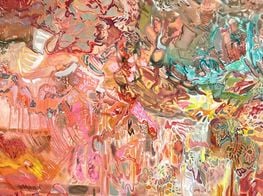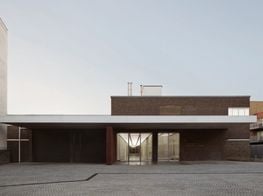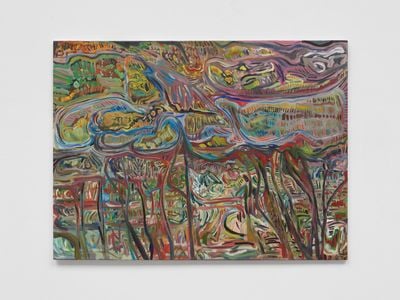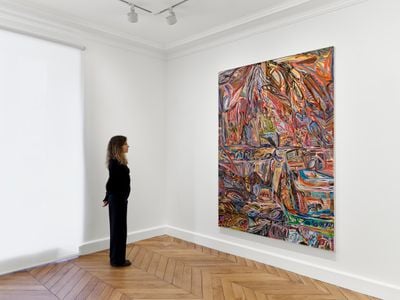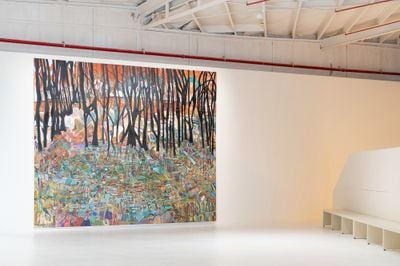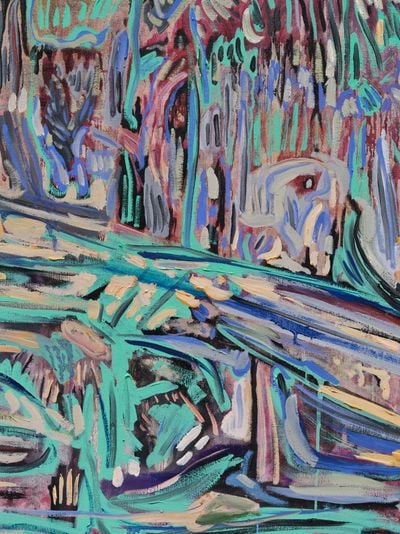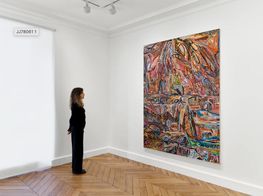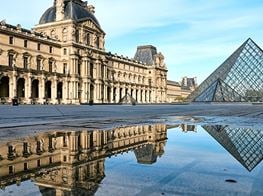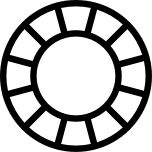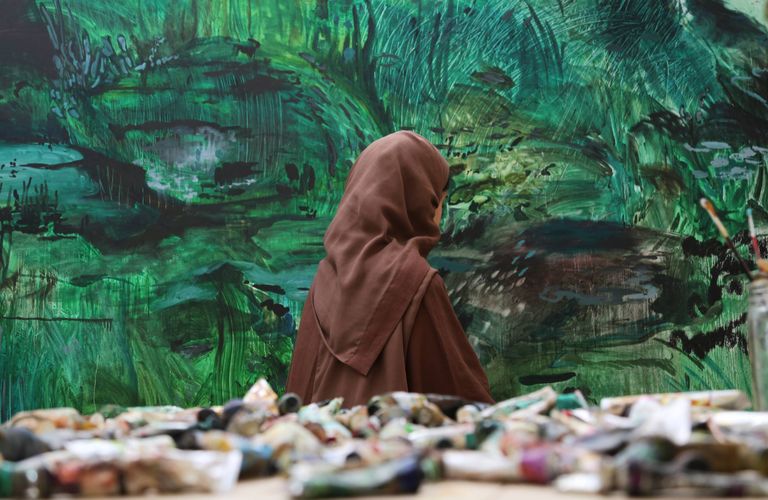
Alia Ahmad’s White Cube Debut
Riyadh, Saudi Arabia's capital and the largest city on the Arabian Peninsula, has long astonished global audiences with its heritage and rapid industrial growth. Its story is illustrated through the brush of painter Alia Ahmad.
Ahmad grew up in Riyadh, later moving to London to study at King's College London and the Royal College of Art, where she gained her MA. She then returned to Riyadh to develop her practice, which seeks to explore the rich cultural heritage of storytelling and weaving of the nomadic Bedouin tribes.
With brushwork that teeters between the gestural and architectural, Ahmad's abstract paintings trace the vegetal patterning of Riyadh's foliage with a lyricism reminiscent of traditional Al Sadu weaving methods and cursive Arabic script.
Ahead of her first solo exhibition in Europe, Terhal Gheim (The voyage of clouds) (6 March–18 May 2024) at White Cube in Paris, Ahmad discusses her hometown, her new paintings and drawings, and the artists that formed her thinking.
You grew up in Riyadh. How would you describe the city? What essence of the place are you wanting to capture in your canvases?
One hundred years ago, Riyadh was a very different place to when I was born in 1996. In Arabic, Riyadh translates to 'oasis' or 'gardens', predating the modern metropolis it is known for today.
In my practice, I try to draw parallels between the changes in landscape, the growth in culture, and how the Saudi Arabian capital holds a special place for me.
This is why visual research, specifically in Riyadh, is so important to me. The landscapes became an easy reference point as I was working from observation. When I started to paint in a more abstract way, I tried to get a diagrammatic balance.
How do you start a painting? Do you make preparatory sketches or are they the product of intuition and improvisation?
Both. Sometimes I make drawings before starting a work, other times I go straight in. My sketches usually reference adverts, old photographs, or places that I think would work well collaged together.
They are all very illustrative, which helps me understand this direct, linear language of the drawing process. I always found a great sense of comfort in creating something that is obviously digestible.
The re-imagination of these images within my paintings becomes a visual diary of all the wonder that's out there to capture.
Your paintings are busy. When do you know a painting is finished?
Whenever it feels right. I work on multiple paintings at a time; this way I don't overthink them. I find it easy to get bored of working on a painting and often have too high expectations. Whenever I feel this coming on, I will leave that particular work and come back to it later.
Your compositions are incredibly intricate and architectural. How do you structure a painting?
I grew up around Arabic calligraphy, Arabic modernist paintings, and Islamic art, and the balance they portray has fed into my work today. For me, it's about how well different elements balance.
The works in your show at White Cube seem to have a crimson undertone, more so than in your previous works. What inspired this enhanced palette?
I've started to look into the patterns of Al Sadu textiles—woven geometric and figurative patterns and symbols derived from the ancient tribal weaving craft. While the textiles have a varied colour palette, crimson is prominent in the weave.
The vibrancy of the textiles is wonderfully contrasted against Riyadh's muted landscape. My work Alwasm (2023), currently on view at the Diriyah Biennale, best highlights this contrast. The title refers to Saudi Arabia's Al Wasm, the period between October and December when there's a mild relief after the hot summer season. There's a cool breeze in the air, people are out and about, and the environment is in bloom.
The painting depicts Wadi Hanifa, a historic valley in west Riyadh where people congregate to celebrate Al Wasm. People bring picnic rugs, or kashta, and gather alongside water banks—like when patches of greenery emerge after a year-long warm season.
Which artists have been foundational for your thinking?
Safeya Binzagr, Abdulrahman Alsoliman, Peter Doig, Per Kirkeby, and many more.
As with a number of artists (and RCA grads) nowadays, you've received quite a bit of attention since graduating from your MA—with a solo exhibition at Kohn, and now this show at White Cube. How do you shut out the noise and focus on your work?
I think living in Riyadh shuts off the noise. The surrounding landscape is one I won't ever get tired of painting.Going to the studio to paint has become my daily routine—I can't think of another reality without it.
What's next?
I am preparing for a few exciting projects coming up in the spring and fall! It's been an honour to connect and collaborate with people that I have looked up to, I am really grateful for that.
Main image: Alia Ahmad. Courtesy the artist.
Selected Artworks
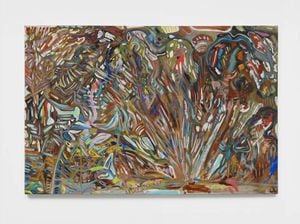
61 x 91.6 cm White Cube
Request Price & Availability
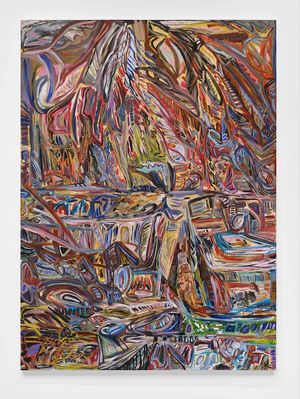
219.6 x 160.2 cm White Cube
Request Price & Availability
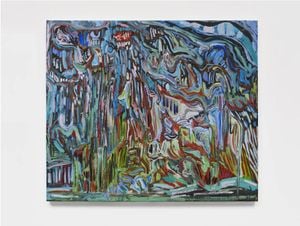
60 x 70.2 cm White Cube
Request Price & Availability
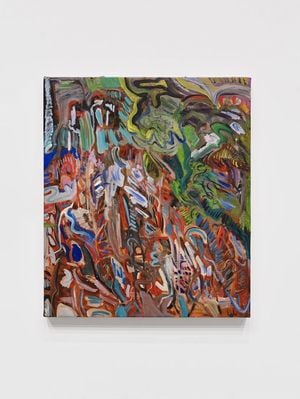
55.2 x 47.4 cm White Cube
Request Price & Availability

